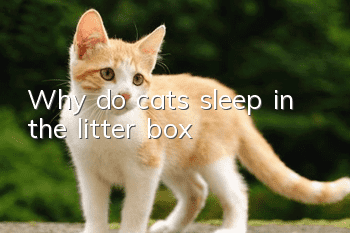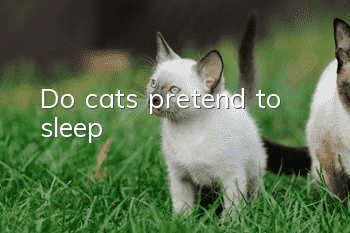Persian cat appearance characteristics and daily feeding methods

Persian cats are the most common long-haired cats. It is a breed born in 1860 after more than 100 years of selective breeding in the UK, based on the Afghan long-haired cat and the Turkish Angora long-haired cat. Persian cats have a lovely face, long and gorgeous back hair, and elegant manners, so they are known as the "Prince of Cats" and "Princess". They are the most favorite purebred cats among cat lovers in the world. occupies an extremely important position. Persian cats are extremely popular around the world, and cat owners are proud to own a Persian cat.
1. Morphological characteristics of Persian cats
1. Appearance
Head: Large, round, and thick; the skull is wide, with bulging cheeks; the nose is short and wide, with a collapsed nose bridge; the muzzle is short and wide, the lower jaw is well developed, thick and powerful, and the teeth are scissor or pincer bite. Viewed from the side, the head, forehead, nose and muzzle are on a vertical line; viewed from the front, the entire face is round.
Ears: Persian cats are preferably small, with rounded ears at the ends, slightly tilted forward, open at the base, and wide apart between the ears. The base of the ears is lower than the skull.
Eyes: Large, round, slightly protruding, moderately spaced and well-proportioned. The eye color depends on the coat color. It is generally believed that the eye colors of Persian cats include blue, green, copper, gold, amber, strange color and two eyes with different colors (i.e. mandarin duck eyes). The fur color of Persian cats with mandarin duck eyes is often white. Cats with green, amber and gold eyes generally belong to the silver-gray coat color system. The purer and darker the color of each eye, the better, and the color of both eyes should be even.
Body: The body shape is typical short and fat, with thick bones throughout the body, the front and rear limbs are at the same height, the legs are upright, and the shoulders and hips are at the same height. The toes are round, large and powerful, the claws are large, and the toes are compact. The toes on the front paws have 5 toes, and the toes on the back paws have 4 toes. The tail is short and rounded, proportional to the length of the body, and slopes toward the back, but not against the back. The tail does not drag the ground when walking, and the tail hair is fluffy. The coat is long, soft, fluffy and shiny, covering all parts of the body including the shoulders. The hair on the nape of the neck hangs down like silk to the folds between the forelegs. The hair on the ears is long and curly. The hair between the toes is longer and the tail hair is fluffy and dense. The hair is as soft as cotton and as light as silk.
2. Coat color
The coat color of Persian cats can be roughly divided into five major color systems, with nearly 88 kinds of coat colors. Among them, the single colors include white, black, blue, red, cream, etc. The Chinchilla color family (= Chinchilla cat) includes rare red Persian cats with fur colors such as mouse gray (tip color), gradient silver, gradient gold, etc. Pineapple. Smoke color includes smoke color (hair root white, gradient blue, gradient red, etc.). Tabby color includes silver, brown, red, cream, blue, etc. Mixed color packageIncluding tortoise shell color (Tortie), three colors (Calico), blue cream, and two colors such as black and white, blue and white, red and white. The fur colors of red (mostly males) and tortoiseshell (mostly females) are relatively rare, so Persian cats with this coat color are also very rare.
The unique double coat has a dense undercoat and is covered by a long, smooth, waterproof coat. In winter, the dense undercoat is fully grown, so the coat in winter is fuller than in summer. The quality and type of coat are most important, and the color and pattern are less important.
3. Tears
Persian cats have short nasal passages and are prone to tear stains around their eyes. Especially for light-colored cats, tear stains on their faces are really ugly. In fact, it can be easily removed as long as you pay attention to daily cleaning. The simple method is to wipe your eyes with a hot towel every day. You can mix half and half of some starch and boric acid powder and pat it on the tear stains. The powder can absorb stains and have a bleaching effect. Use a half-and-half mixture of starch and boric acid powder to remove it; first make a paste with water. Apply the paste carefully to the stain and let it dry. After it dries, just brush it off and wipe it clean. Be careful not to let the powder fall into your eyes. These powder particles falling into the eyes may cause eye ulcers. Boric acid powder is not hard to find and can treat existing stubborn stains on cats’ faces. It can be purchased in general western pharmacies.
2. Daily feeding of Persian cats
Persian cat Daily management of Persian cats: Use a neutral and soft bristle brush to comb the coat and tail every day. In order to keep the coat smooth and beautiful, shampoo and bath should be used regularly. When the cat is dirty, the coat should be washed in warm water with neutral soap, and then washed and dried immediately. The Persian cat is the most famous breed in the world. It has elegant manners and charming appearance. It has been popular since the Victorian era. After breeding and cultivation, there are more and more color varieties. But the appearance has changed considerably from the early days. Long-haired Persian cats have flatter and rounder faces (commonly known as "Jingba" faces), smaller ears, and denser coats. So to avoid tangles, it needs to be combed every day.
According to relevant information, Persian cats were developed around the 16th century by crossing Himalayan cats and Angora cats, and after years of purification and breeding. Persian cats are larger in size, with long and thick coats, a large round head, a flat face, a wide forehead and small ears, round eyes and a flat nose, a short and wide muzzle, a round body due to long hair, short and soft limbs, and a fluffy and thick tail. It gives people a sense of elegance and luxury. Persian cats can be divided into white, black, red, yellow, dark gray, blue, bicolor, tortoiseshell, variegated, tabby and other varieties according to different coat colors. Among them, the red variety is particularly valuable.
The Persian cat has a beautiful and generous appearance, a small and sweet cry, a gentle personality, bold and curious, likes to be close to people, is considerate, and is easy to train. It is a noble pet that is loved by people. persian catBecause it is easy to shed hair, and the villi on the abdomen are easy to get tangled and knotted, trap dirt and breed bacteria, so it must be combed every day and bathed regularly every month.
- How to trim Chinchilla cat nails?
- Why does the little kitten keep meowing?
- How to train a cat to catch mice? Corrective training for cats!
- What preparations need to be made before raising a cat? A must-read for novice cat owners!
- Can kittens eat ham?
- How long do Burmese cats generally live?
- What medicine is best for external deworming of cats?
- What to do if cat ringworm grows on its paws
- Is the Turkish Van cat easy to raise? Turkish Van cat pictures | price |
- How much weight does a Ragdoll cat normally weigh in three months?



